Signs of Carpenter Ants vs Termites
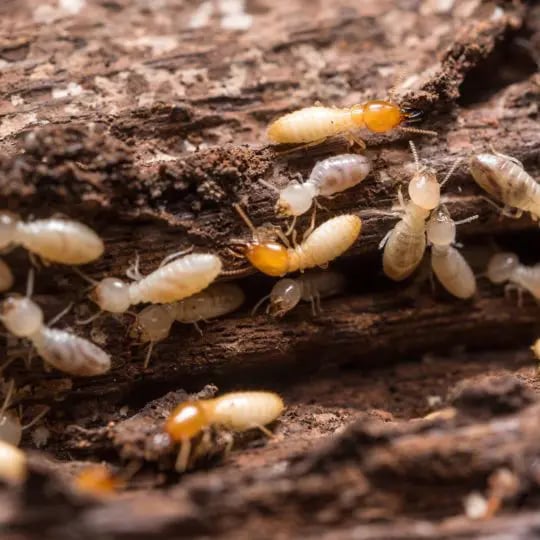
Carpenter ants and Eastern Subterranean Termites (the most prevalent species of termites in Pennsylvania), are both wood-destroying insects that live in colonies, making it easy for many homeowners to mistake one for the other.
It is crucial to differentiate between them, as both require varied methods for extermination.
Let’s explore the signs of carpenter ants vs termites, and discover the keys to telling them apart from each other.
Table of Contents
-
What is the Difference Between Termites and Carpenter Ants?
-
Treatment Methods For Carpenter Ants vs Termites
What is the Difference Between Termites and Carpenter Ants?
1. Appearance
What Do Carpenter Ants Look Like?
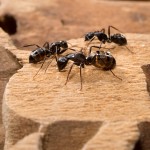
Carpenter ants possess the following physical characteristics:
- Antennae: angled antennae
- Body: a three-part body with a thin waist
- Color: dark brown/black
- Wings: swarming carpenter ants have wings that are different sizes
What Do Termites Look Like?
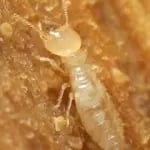
Termites have the following physical qualities:
- Antennae: straight antennae
- Body: two separate body parts (rice shaped)
- Color: termites are white/tan
- Wings: swarming termites have equally sized wings
2. Diet
What do carpenter ants eat?
According to Pest World, carpenter ants consume insect honeydew, plant and fruit juices, insects, and other arthropods. Although they much on it, carpenter ants do not eat wood to gain any nutritional value; they solely use it for shelter to colonize.
What do termites eat?
Termites are unique in the fact that they are the only insects that can digest cellulose. Cellulose is a very rich energy source found in dead wood, which is a large part of a termite’s diet.
3. Behavior
Signs of Carpenter Ant Activity and Damage
- Look for wood galleries that have been hollowed out. They will be smooth and neat, accompanied by piles of fine sawdust shavings — the perfect spot for the carpenter ant to nest.
- Listen for a faint crunching and rustling sound coming from a wall, window sill, or ceiling.
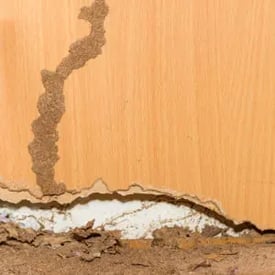 Signs of Termite Activity and Damage
Signs of Termite Activity and Damage
- Look for mud tubes or tunnels running up and down the sides of home foundations, basements, and walls.
- Look for wood galleries filled with soil, chewed wood, and excrement.
- Look for termite swarmers, also known as termite reproductives.
- Look for discarded wings – generally, the wings are found near windowsills and doors.
Treatment Methods For Carpenter Ants vs Termites
How To Get Rid of Carpenter Ants
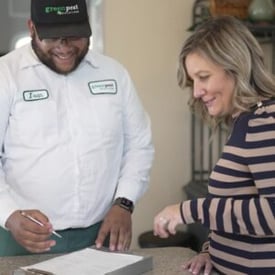
Step 1: Call Your Local Pest Control Provider
Carpenter ants are social creatures so the most effective treatment will be the one that targets the colony. Have a pest control specialist inspect the property to search for the colony, which can be done by locating sawdust piles and watching for the movement of foraging ants.
Step 2: Determine the Best Treatment Option For Carpenter Ants
Carpenter ants colonies can be found in a variety of places. As a matter of fact, there are several different ant treatment options that are used on a case-by-case basis depending on where the colony is. For example:
- Dust formulations are very effective when treating a colony inside of a wall void.
- Liquid insecticides should be used around the perimeter of the property to create an invisible barrier that the ants can travel through and bring back to their colony.
- Carpenter ant baits, placed where ants are suspected to be, are also proven to be an effective form of treatment.
How To Get Rid of Termites
![]() Step 1: Call Your Local Pest Control Provider
Step 1: Call Your Local Pest Control Provider
They will inspect and assess the property for conducive conditions and all signs of termite damage. This will allow you to get the most accurate price quote and the best termite treatment options geared toward your specific property.
Step 2: Determine the Best Treatment Options For Termites
The two most common forms of treatment for subterranean termites are a liquid soil treatment, or installing a baiting system.
- Liquid treatment is generally performed by digging a shallow trench around the outside perimeter foundation of the property, and in some cases drilling a hole into the structure, and filling it with a termiticide.
- Baiting systems are a great option for homeowners with a well or pond on their property since you cannot treat with most liquid termiticides within 25-30 feet of a well. A termite baiting system, such as Sentricon, is installed by placing wood baits inside of a termite monitoring station and burying multiple stations underground around the perimeter of the home.
Keep Carpenter Ants and Termites Under Control With Green Pest Solutions
When in doubt, give Green Pest Solutions a call at 855-312-7157. We are more than happy to answer any questions you may have.